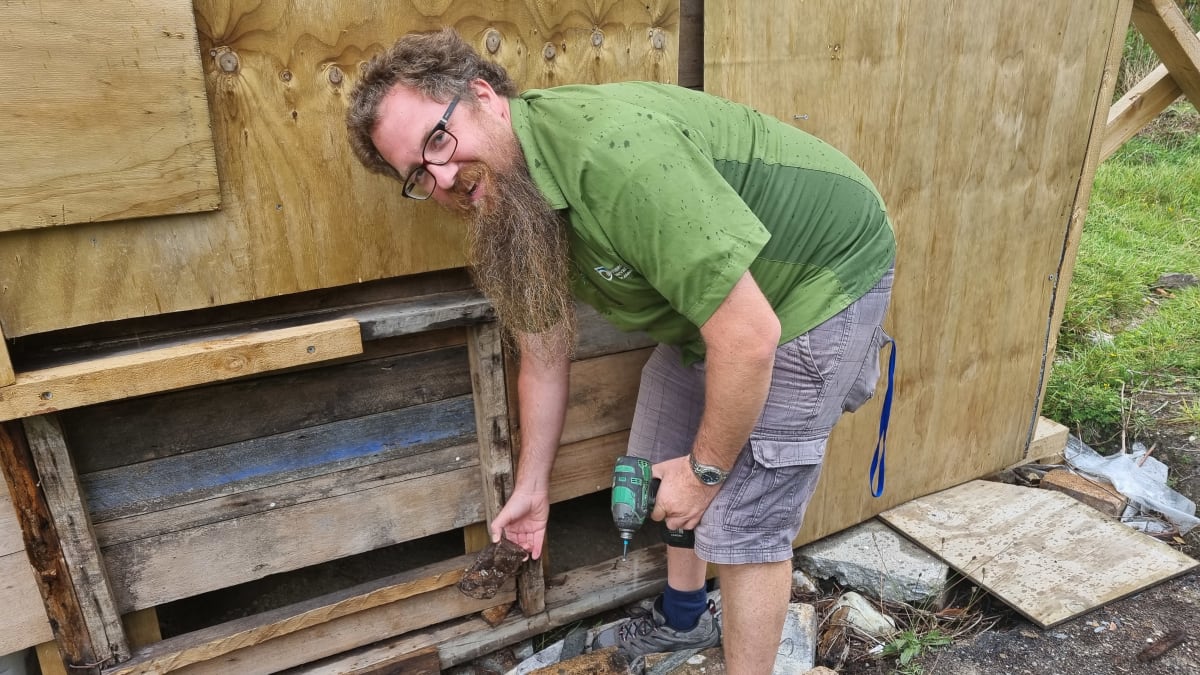
Unsung Czech photographer and West Coast miner Jos Divis is belatedly having his moment in the sun
The honours have been a long time coming but a forgotten photographer who captured the life and times of a West Coast gold town is about to get his due.
Josef Divis, a diminutive Czech immigrant, arrived in the isolated township of Waiuta in 1912 to work in the Blackwater goldmine.
Unusually for the time, his passion was photography and with him, along with his pushbike, he brought an impressive array of high-quality German camera gear.
Over the decades, Divis documented the doings of the isolated community high in the hills of the Grey Valley recording everything from weddings and school plays to union meetings, and in an extraordinary series of photographs, miners at work underground.
Divis gained limited recognition with the publication of historian Simon Nathan’s book through the eyes of a miner in 2010.
But a documentary opening in cinemas next month will pay tribute to the man it bills as “simple-living - but an absolute genius”, and his old home at Waiuta is being rescued from ruin.
Nathan says Divis has been thought of as a “local” photographer but more recently his work has been recognised as having national significance.
“There are no other collections like his. He photographed what he saw around him and as a result we have a unique picture of a little West Coast mining town that’s now gone.”
Some of Divis’s most successful photos were taken underground, Nathan says.
“Because he was working as a miner he had the sort of access no one else had. It’s not that he was doing anything technically new or different, but he was applying his skills to a subject that hadn’t been photographed in that way before.”
Selfie pioneer
Heritage New Zealand restoration adviser Mike Gillies says the Divis cottage is revealing its history but the man himself is something of an enigma.
“I do wonder how would it have been for him, this dapper, creative little Czech individual who suddenly turns up with his cameras in this very tight-knit, isolated mining community.
“But he was a miner first and foremost; he was underground, he was on the drill. He was working alongside the men he photographed.”

That Divis earned their trust and friendship is evident in his photos.
Time and again his work-weary comrades hold their pose for his camera, their faces showing a patient regard or quizzical amusement.
“They would have had to sit very still while Jos set up the shot then rushed around to join them. He liked to put himself in the photos with his mates,“ Gillies says.
Mostly he made it in time: only one photo exists where the selfie-pioneer is caught in flight - one leg extended mid-air as he joins his subjects.
Nathan has catalogued hundreds of Divis’s glass plates and about 180 pairs of stereo photos, now preserved in major collections.
Meanwhile, the photographer’s humble Waiuta cottage, only just still standing, is in the midst of a $100,000 preservation job.

The ghost town these days is a Tohu Whenua site and historic reserve, cared for by the Conservation Department.
But the Divis cottage has had a rough life in recent years: time, vermin and vandals have all taken their toll.
Margaret Sadler, who heads the Friends of Waiuta network, says there was much rejoicing when DoC’s former director general, Lou Sanson, announced funding for restoration work at a gathering in 2021 to mark the 70th anniversary of the mine’s closing.
“It was just amazing for us that they were recognising him and giving something back to his place. Everyone at Waiuta had such respect for Jos Divis.”
When the mine closed in 1951 everyone left, but Divis stayed on in his little house, Sadler recalls.
“Our family moved to Greymouth but we used to go back up there for a Sunday drive and take food and supplies for Jos.”
Other Waiuta exiles did the same, Sadler says.
“Families missed the comradeship; it was such a close community then suddenly we were all separated - all over the country, all over the world.
“So they would come back to visit and go up to Waiuta and visit Jos Divis and take him food and supplies - he only had a bike for transport.”
Divis had learned his mining and apparently his photography skills in Germany.
Enemy alien
In 1941 he was arrested and interned as an “enemy alien” on Matiu-Somes Island in Wellington Harbour, one of 300 New Zealand residents seen by the government as a potential threat to the war effort.
“While he was on Somes he used to correspond with my uncle Johnny Jones. He’d been the post boy at Waiuta and he was a prisoner of war in Japan,” Sadler says.
There’s no evidence Divis carried any bitterness, she says, and when he was freed in 1943 he returned to Waiuta and lived there until 1965, two years before he died.
His home is a source of fascination for Gillies and DoC senior heritage adviser Tom Barker.
The size of a large living room by today’s standards, it was originally four tiny workers’ cottages mashed together about 1917 to house its original occupants, miner Percy Jones, his wife Mona and eight children.
“It’s one of only six buildings left at Waiuta,” Gillies says.
“As soon as the mine closed, the timber frame houses were collapsed, flat-packed and trucked off to new sites all over the coast. But of course Jos stayed on.”
One of the original huts is much older than the others with a hand-hewn floor and bearers, all tōtara and heart rimu, Gillies says.

Stripping back the cladding has revealed some ingenious bush carpentry and speaks of a culture of making do.
“It’s very much built in the vernacular. It was an isolated town and they used what was handy. We can see they’ve used an old axe head to prop up a sagging bearer. They were resourceful.”
Divis bought the cottage after returning from a second overseas trip in 1930 to visit family and see the world.
Barker says the restorers struck gold recently when DoC worker George Bain carefully removed a skirting board and discovered two previously unseen Divis photos.
The stereoscope image shows two smiling women in front of a private hospital in Mt Eden.
“So maybe Jos had this on his wall and it’s slipped down behind the skirting and there it stayed for the best part of 80 years. George was rapt - we all were. Finding stuff like that is what you go to work for.”
It’s not known who the women were but Nathan has been able to fit them into a sequence taken by Divis in Auckland on the same day, Barker says.
The documentary on Waiuta’s enigmatic photographer by film-makers Dave Kwant and Robyn Janes will have its private premiere in Reefton tonight.
And a great-niece of Jos Divis who discovered her illustrious ancestor via Google and Simon Nathan’s book will travel to New Zealand from the former Czechoslovakia later this year for the official opening of his restored Waiuta home.
What the modest Divis himself would have thought about his belated fame is hard to tell.
He never sought recognition, Sadler says, but he deserves it.
And better late than never.
Made with the support of the Public Interest Journalism Fund








